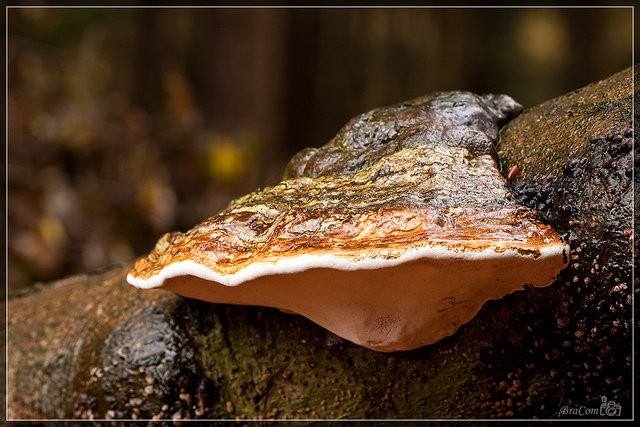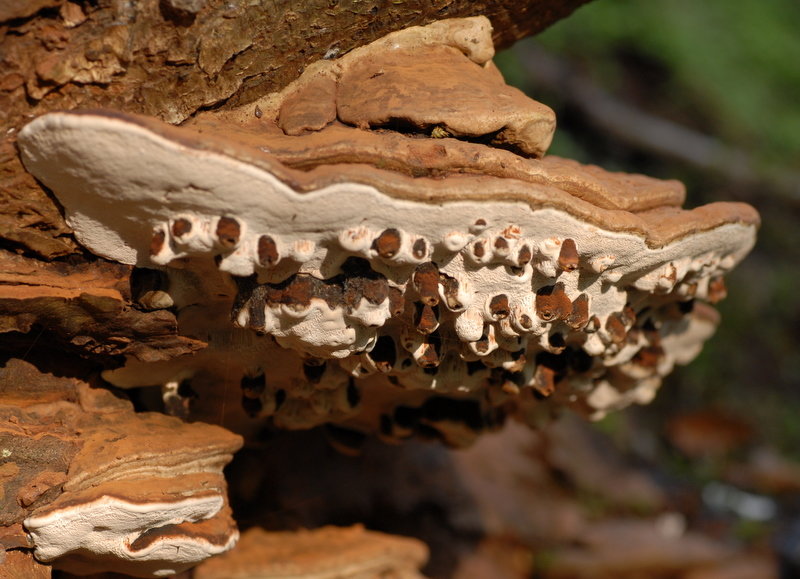Polypore flat (Ganoderma applanatum)
- Vaega: Basidiomycota (Basidiomycetes)
- Vaevaega: Agaricomycotina (Agaricomycetes)
- Vasega: Agaricomycetes (Agaricomycetes)
- Vasega laiti: Incertae sedis (o le tulaga le mautinoa)
- Poloaiga: Polyporales (Polypore)
- Aiga: Ganodermataceae (Ganoderma)
- Ituaiga: Ganoderma (Ganoderma)
- ituaiga: Ganoderma applanatum (Tinder fungus flat)
Ganoderma lipsiense

The cap of the flat tinder fungus reaches 40 centimeters in width, is flat on top with uneven sagging or grooves, and is covered with a matte crust. Often found topped with rusty-brown spore powder. The color of the cap occurs from grayish brown to rusty brown, there is an edge on the outside, which is constantly growing, white or whitish.
Spores – The spread of spores around is very abundant, the spore powder is rusty-brown in color. They have a truncated ovoid shape. The part of the fruiting body of the fungus that bears the spore powder (hymenophore) is tubular, white or creamy white. With a little pressure, it immediately becomes much darker, this sign gave the fungus a special specific name “artist’s mushroom”. You can draw on this layer with a twig or stick.
Leg – mostly absent, sometimes extremely rarely comes across with a short lateral leg.

The pulp is hard, corky or corky woody, if broken, it is felty fibrous inside. Color brown, chocolate brown, chestnut and other shades of these colors. Old mushrooms take on a mottled fading color.
The fruiting body of the fungus lives for many years, sessile. Sometimes located close to each other.

Distribution – grows everywhere on stumps and deadwood of deciduous trees, often located low. Wood Destroyer! Where the fungus grows, the process of white or yellow-white wood rot occurs. Sometimes destroys weakened deciduous trees (especially birch) and softwood. It mainly grows from May to September. Widely distributed in the temperate zone of the northern hemisphere.
Edibility – the mushroom is not edible, its flesh is tough and does not have a pleasant taste.









